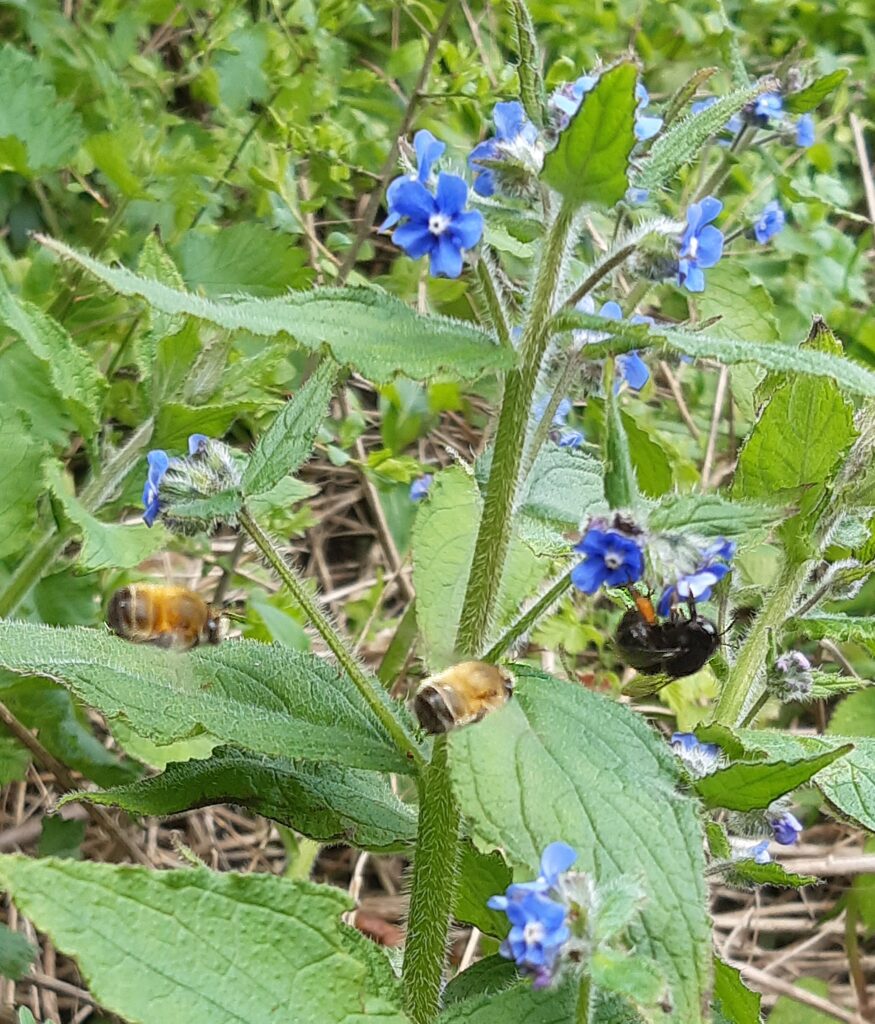
Hairy-footed Flower Bees at Gunnersbury Triangle


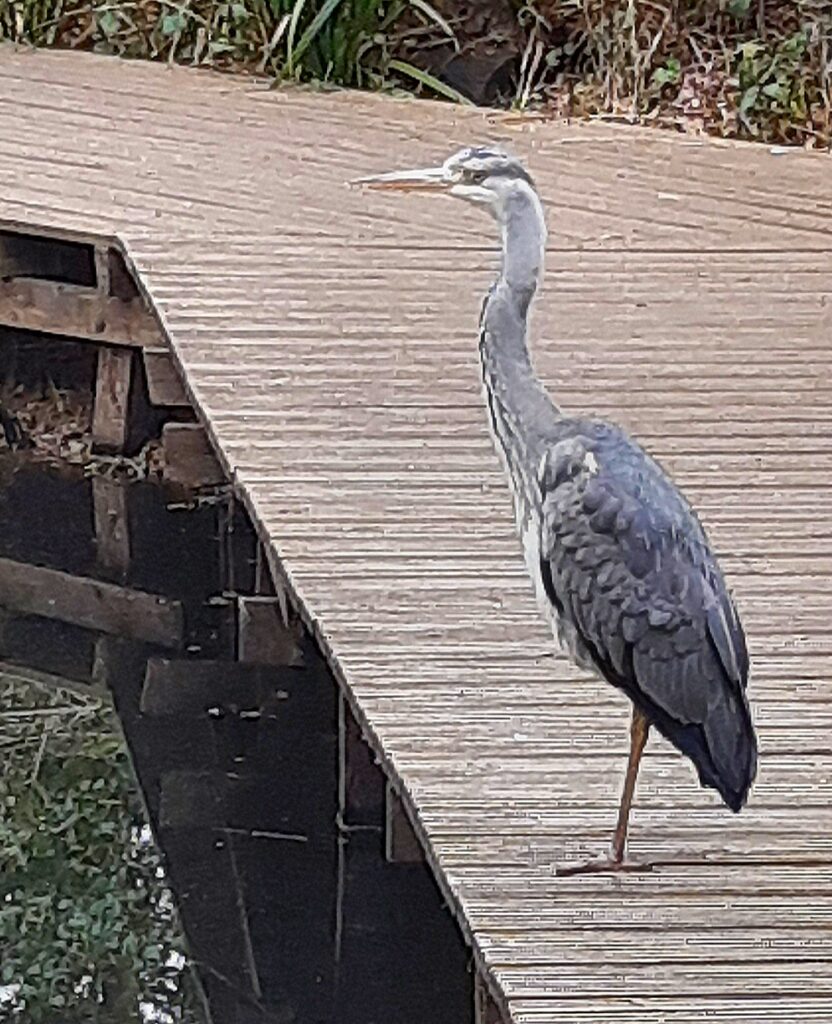

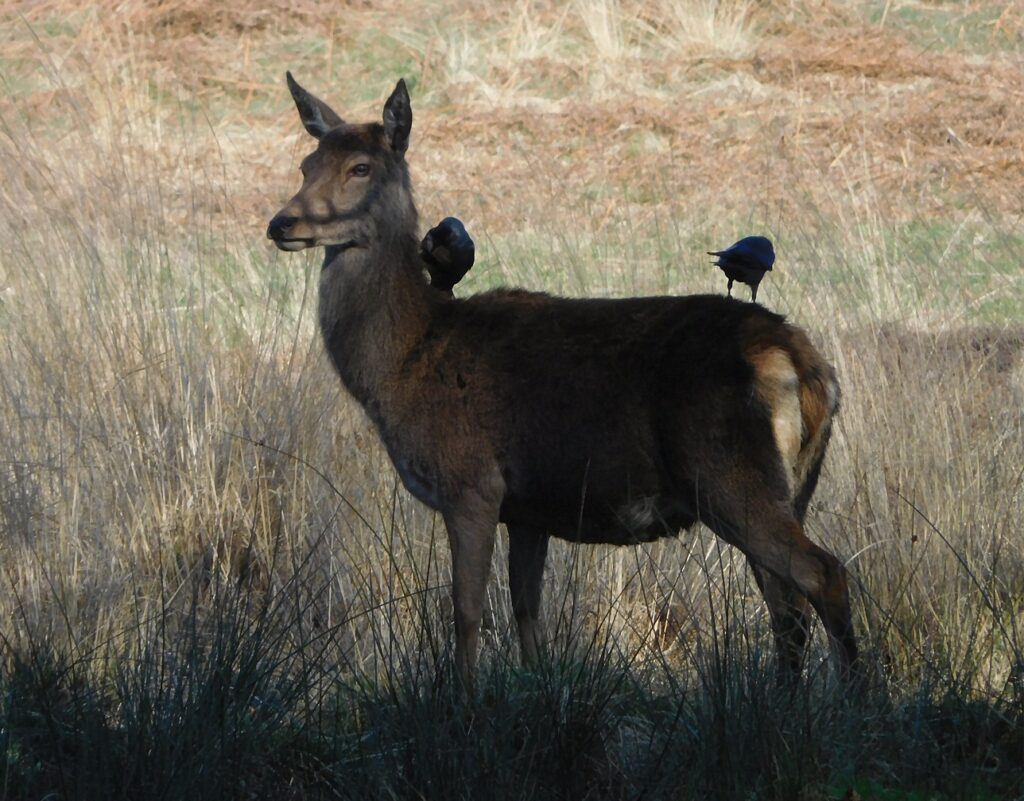
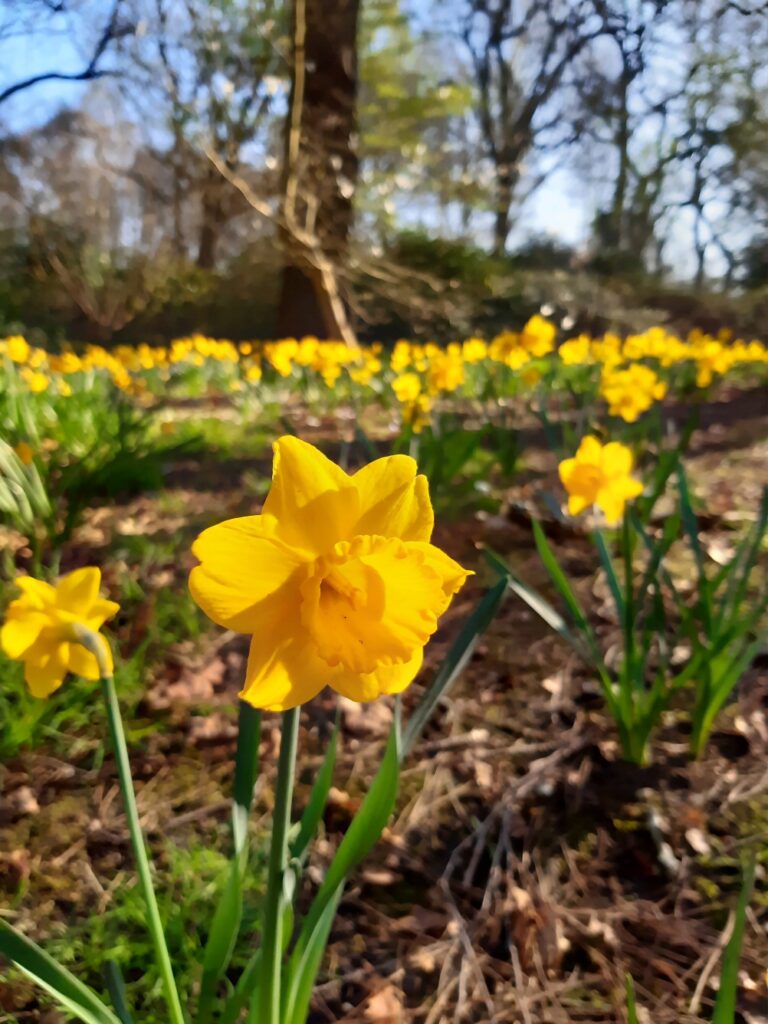
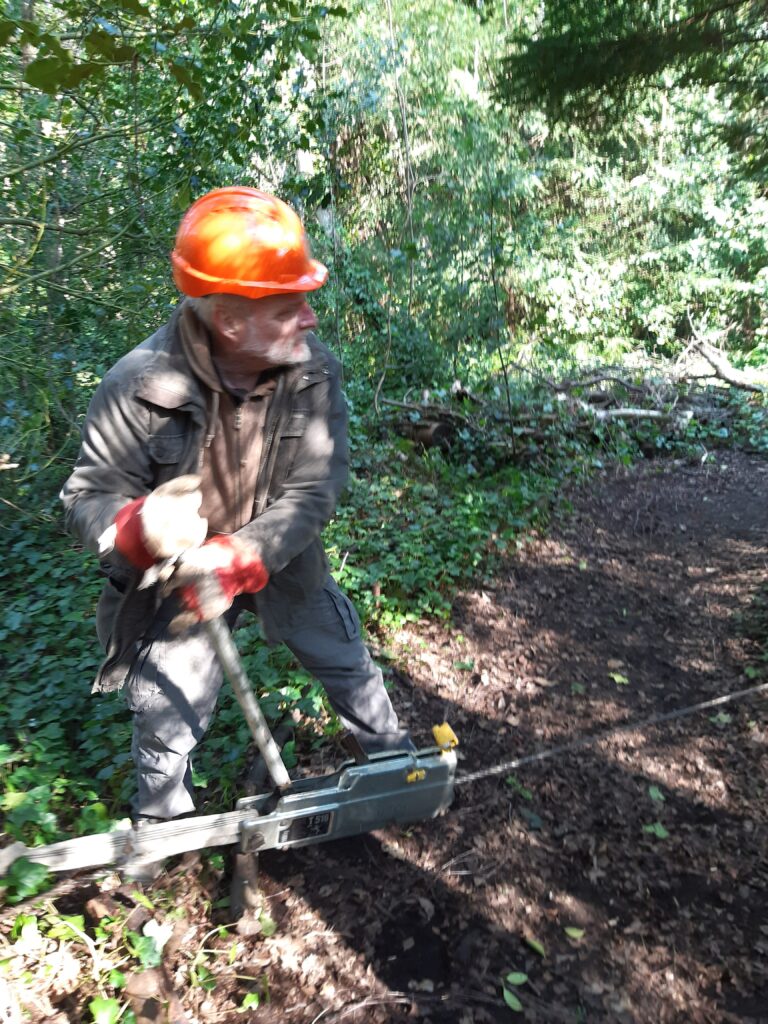
Storm Eunice snapped three or four trees in the reserve, and left many others leaning a bit. A few days later, Storm Franklin blew in, and dumped a lot of water on the trees. Some trees fell. Then over the next week, the trees with roots no longer securely fastened to the ground, or already leaning over, started to sag on the wet ground, and one after another, big old birches fell, crashing to the forest floor, or lodging on other trees. One of the biggest cherry trees in the reserve fell, bringing down several other trees and giving us quite a problem with the tangle it left behind. The winch enabled us to pull a lodged birch trunk down, but not before we’d pulled a bit in one direction, then another to dislodge it, then back to the first direction … and suddenly it started to slide. I thought it had jammed again, but one more pull and it fell.
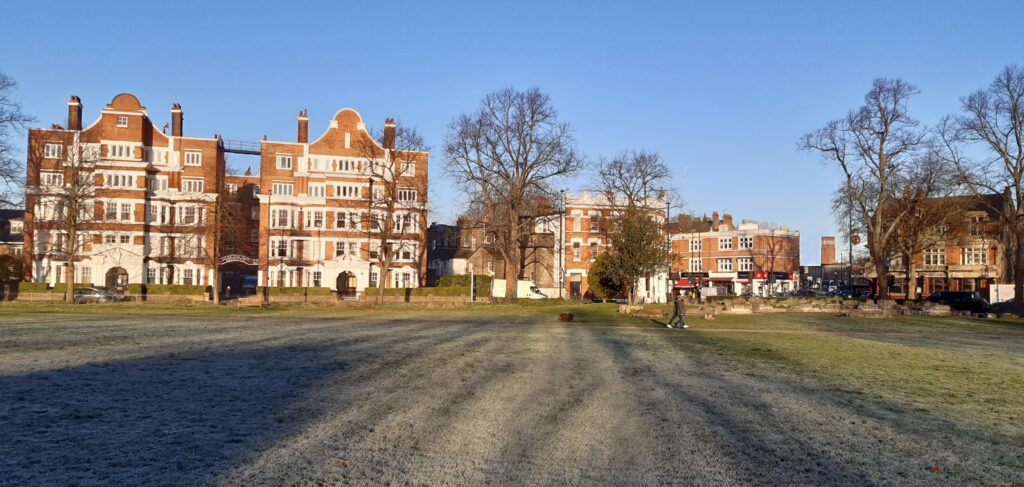
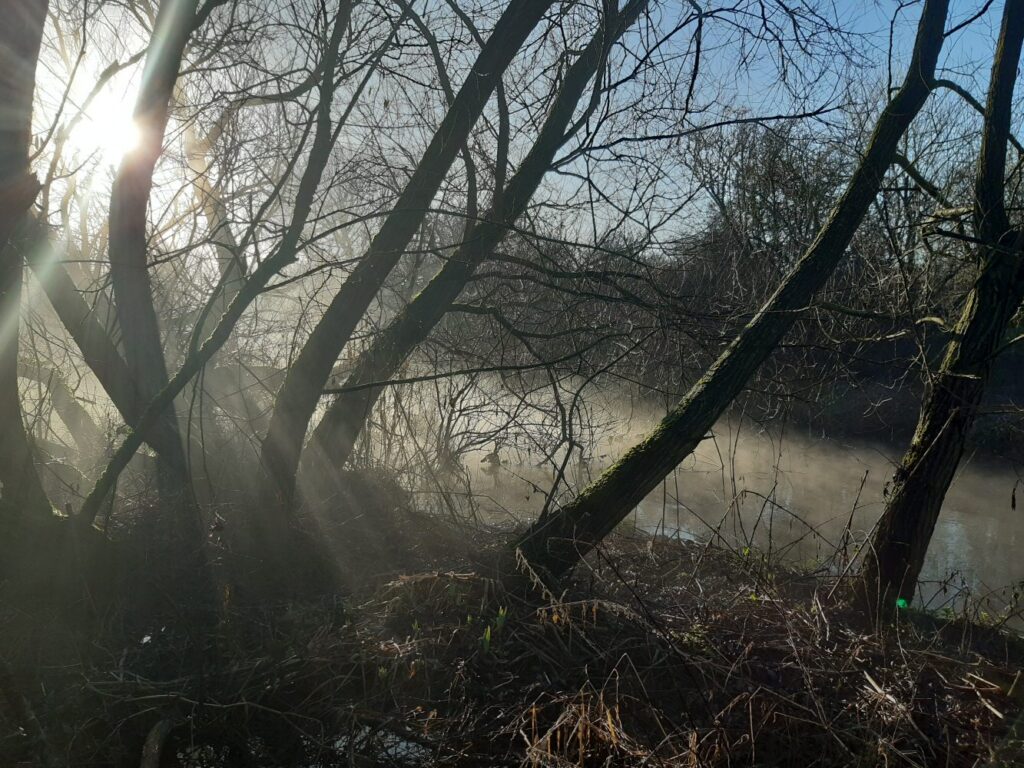
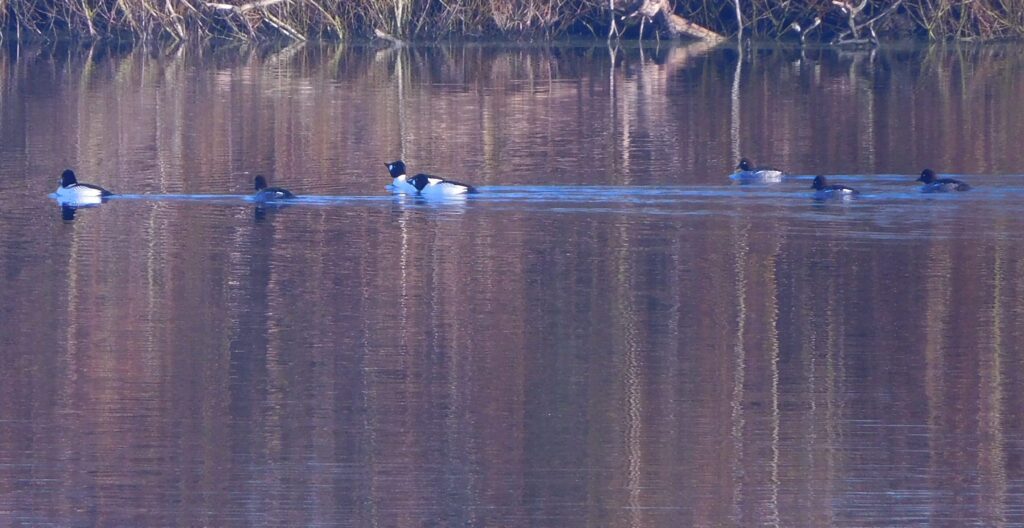
Among the wonderful moments on this walk: a heron gave its cronking call and flapped slow over the water; a plane passed behind three cormorants drying their wings, perched on the branches of a dead tree; a group of goldeneyes panicked and pattered across the lake, gaining speed for takeoff, giving their high-pitched call, the waves sparkling in the slanting sunshine; a song thrush tentatively singing its repeated music; a solitary fieldfare.
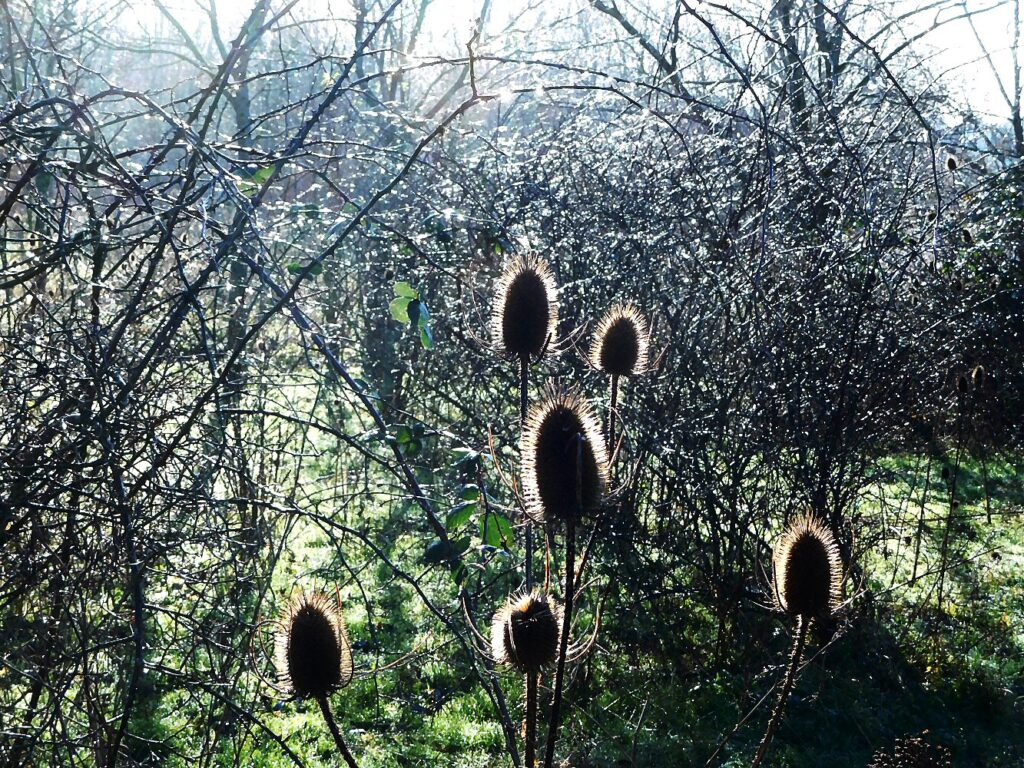
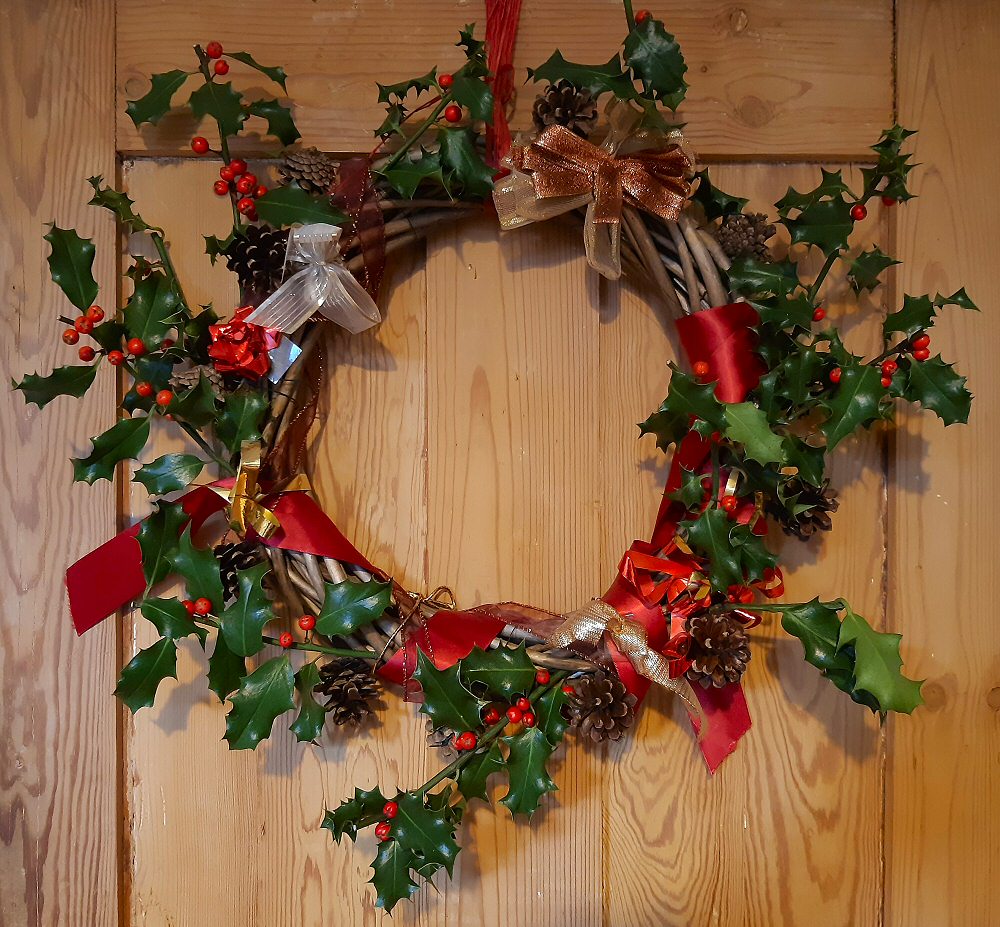
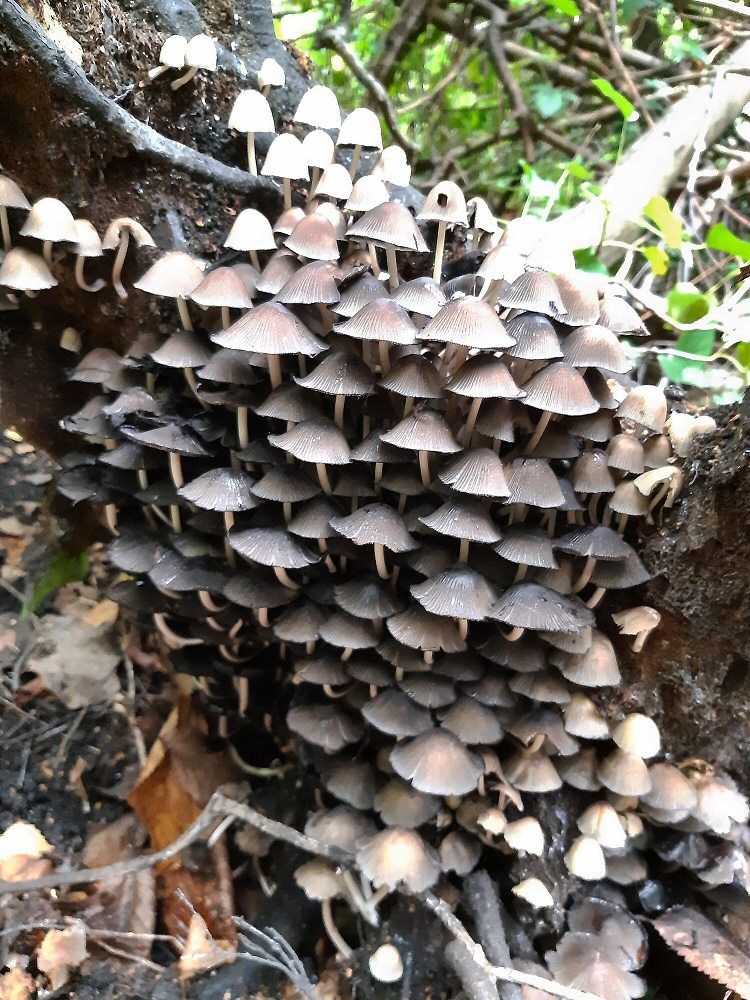
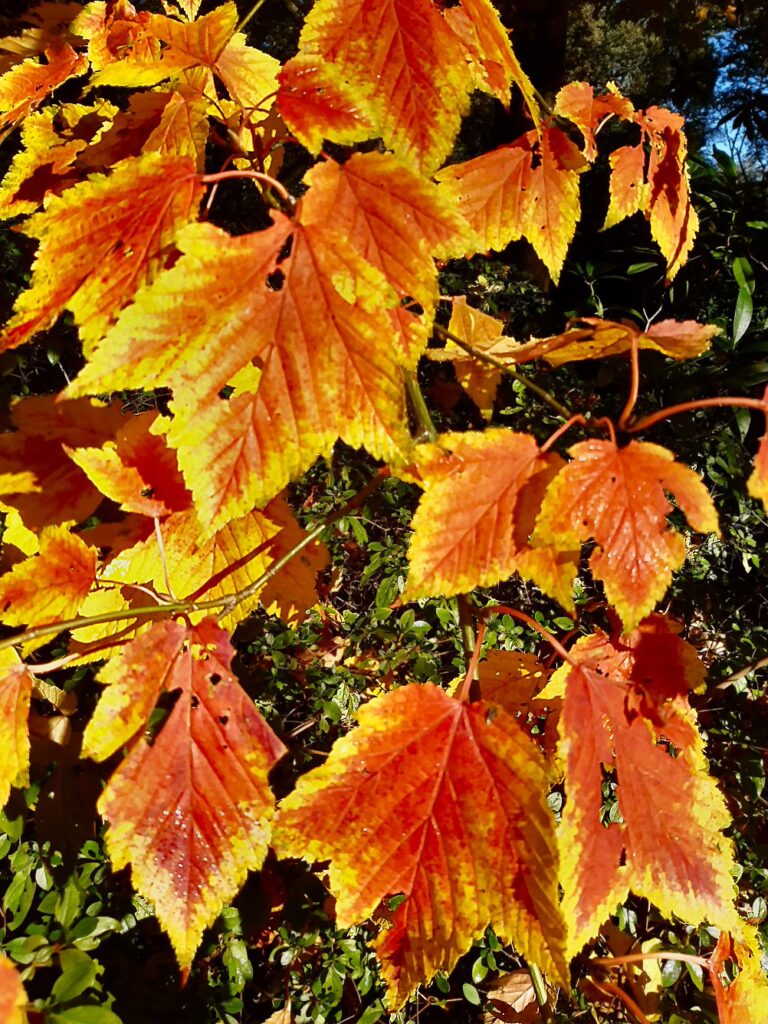
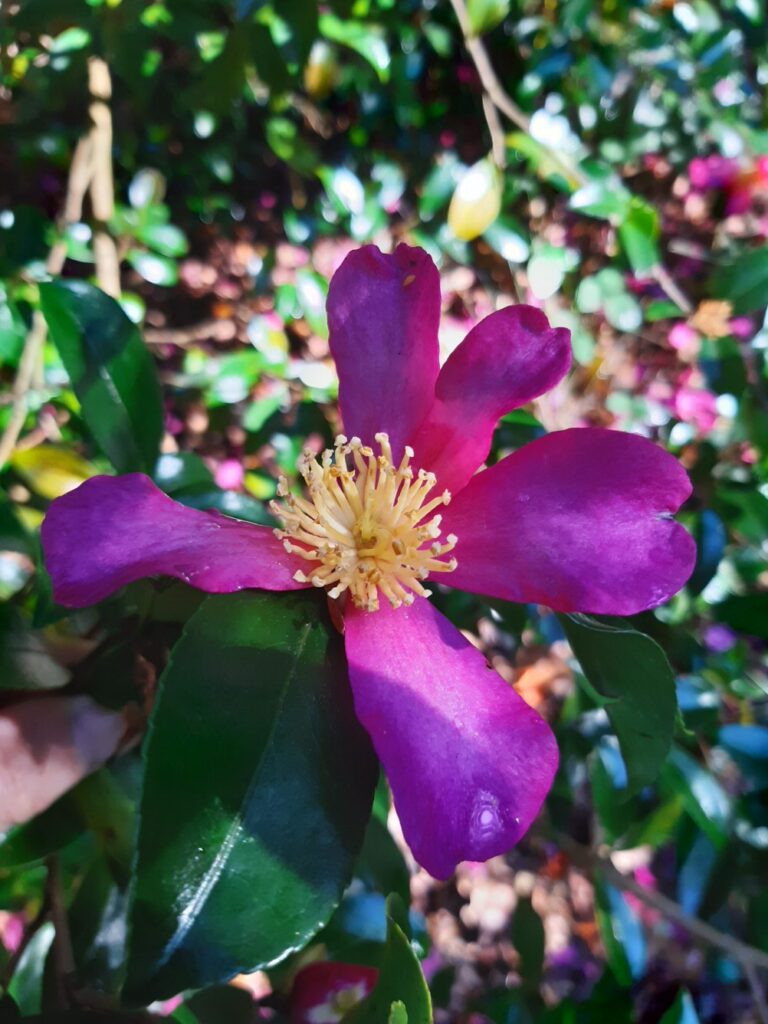
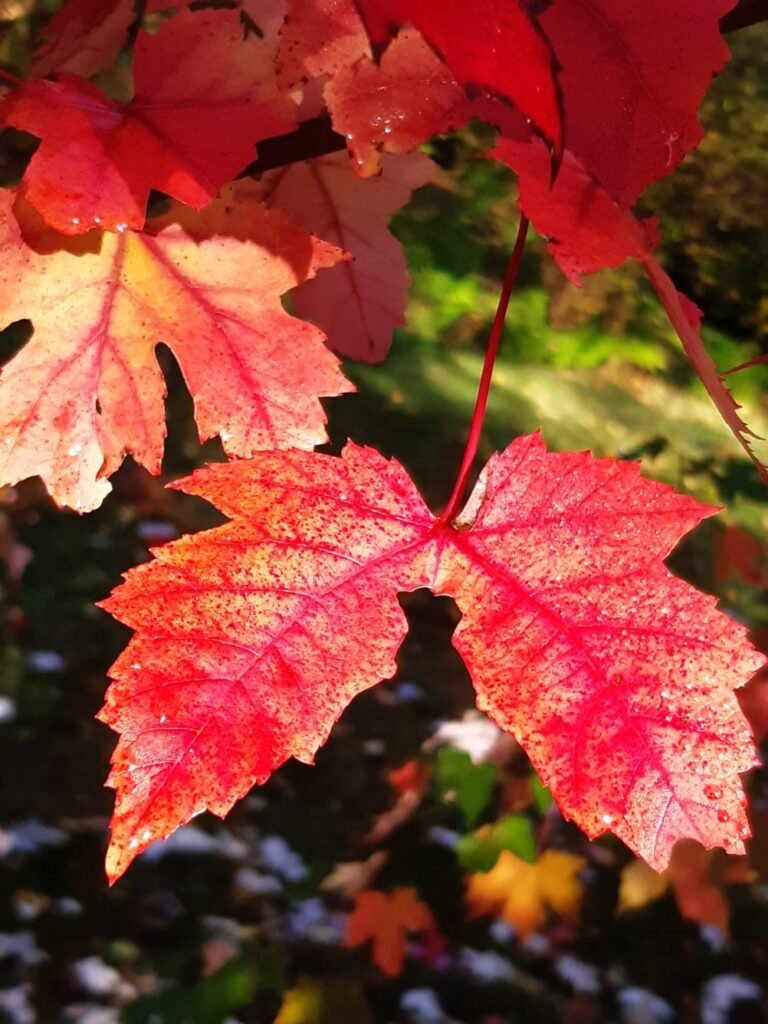
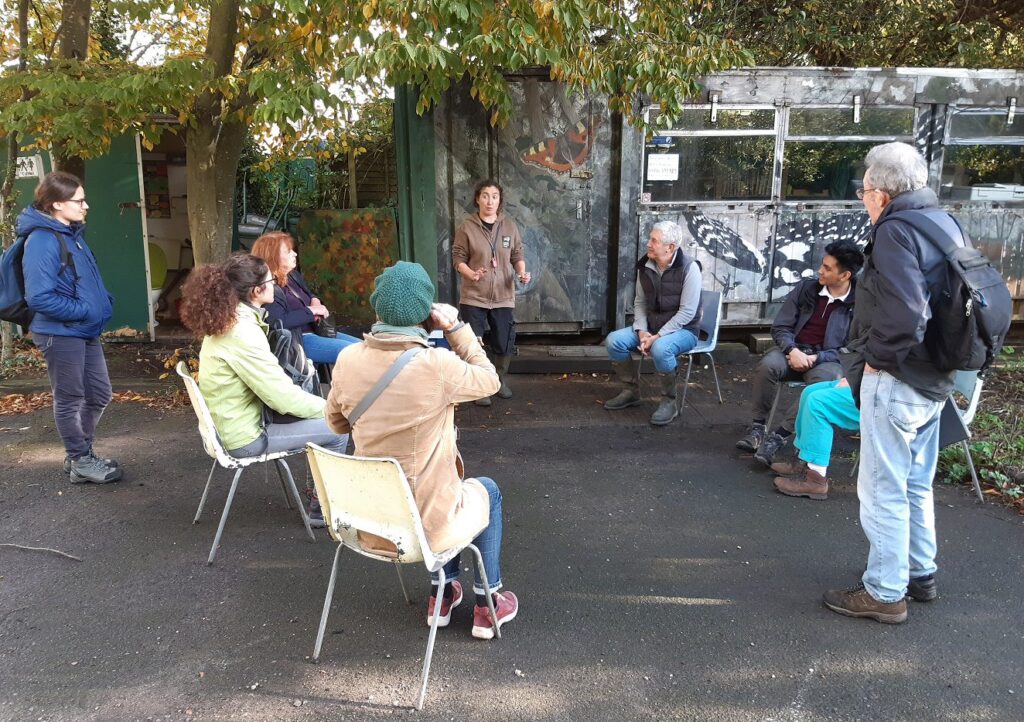
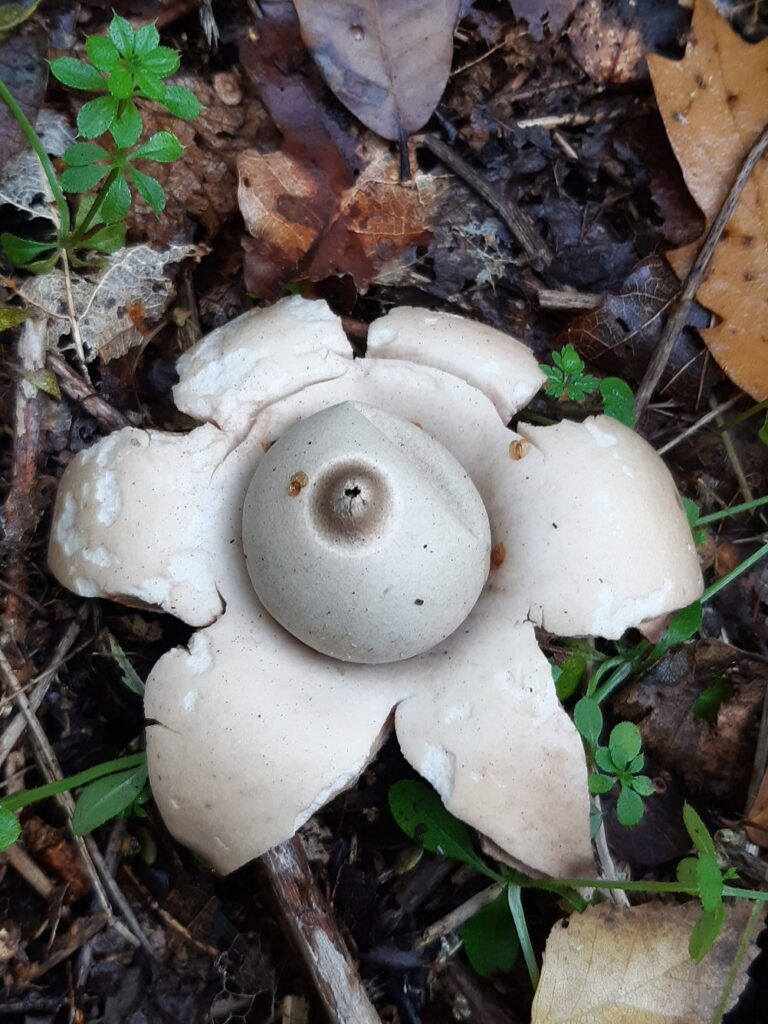
Well, here is the list that I wrote down as we went round. I’m sure that Alick Henrici who was leading the group named more species than this, and he also declined to name several difficult species which he collected in his little box to take for analysis back at Kew by his colleague Geoffrey Kibbey! Still, the fact that the group found so many – and there was no doubt at all that having more pairs of eyes resulted in more finds – was surprising to most people present. We walked anticlockwise around the reserve, and found the species in the order shown.
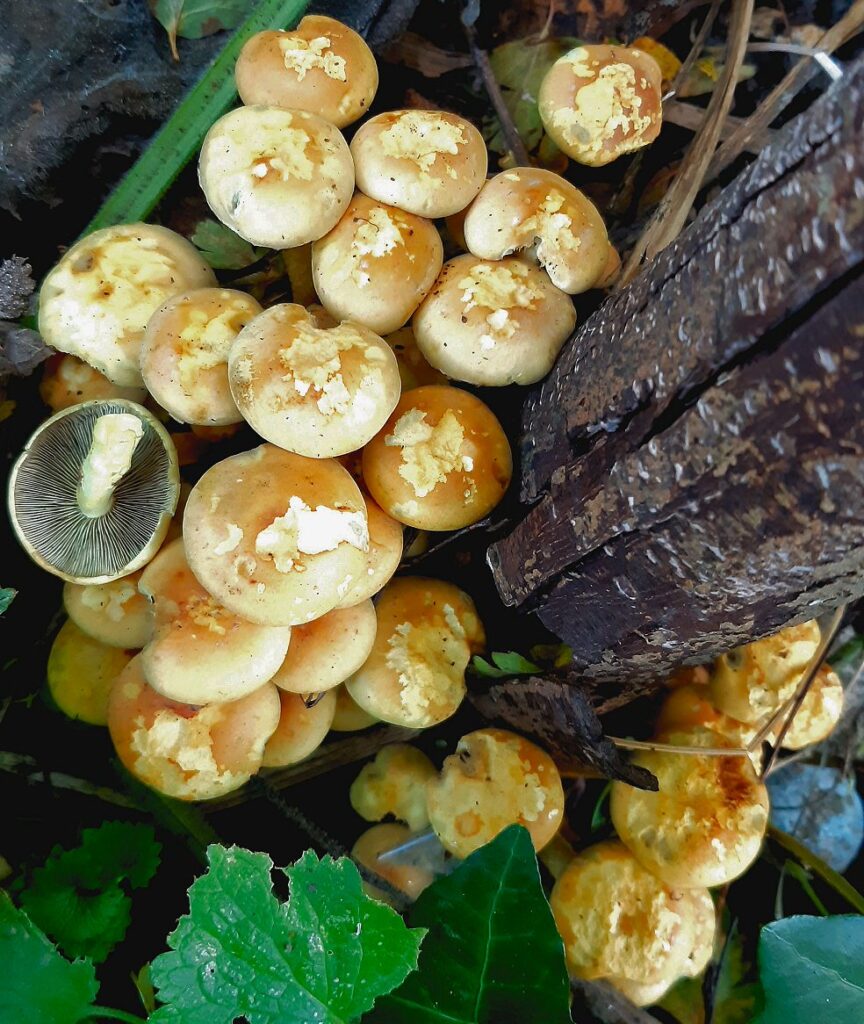
Trametes (Coriolus) versicolor, the Turkeytail, a very common but elegant little bracket, forming troops on fallen branches and logs. The name Coriolus seems like the Coriolis effect that makes storms whirl around, and it does have a whirly effect on its patterned top surface.
Stereum hirsutum, another very common species, the Hairy Curtain Crust or False Turkeytail, forms a white crust on logs, its top gently velvety (hence ‘hirsutum’, hairy), with no pores
An Ascomycete, a spore-shooting fungus with its spores 4 in a row under the microscope, forming firm little brown balls on logs.
Schizopora paradoxa, thin white layer on logs
Piptoporus betulinus, the Birch Polypore or Razorstrop Fungus – when dried it was used to put a polish on the old Sweeney Todd the Barber type of cutthroat razor! Finding it is practically guaranteed on dead Birch wood, standing or fallen.
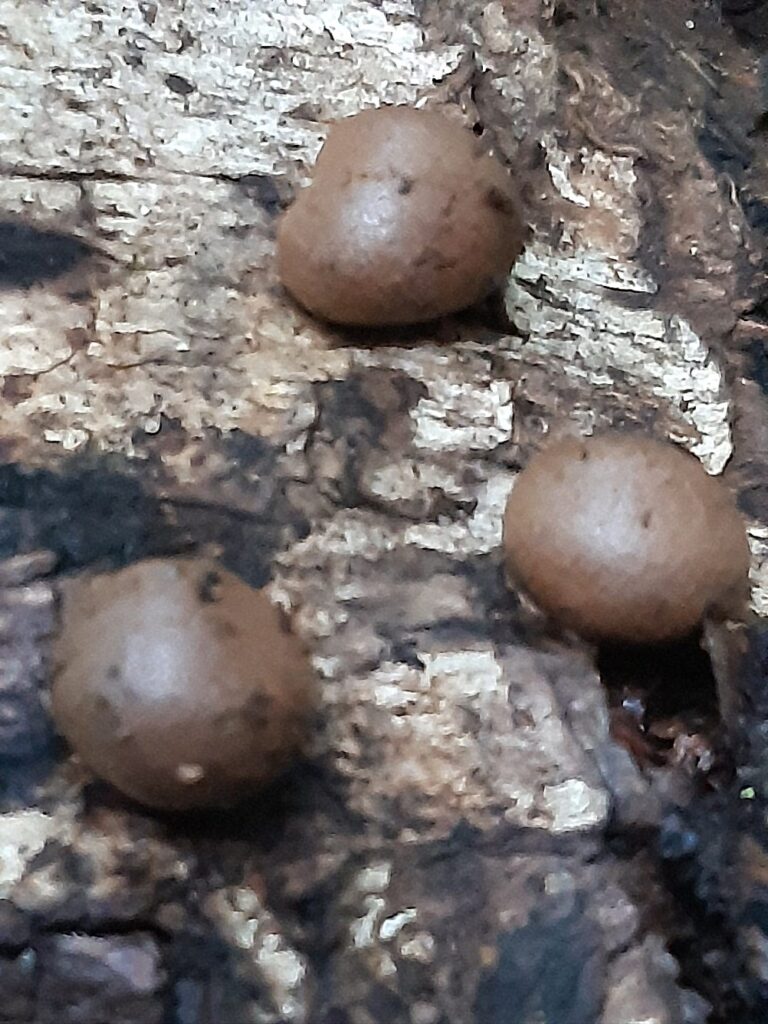
A slime mould, forming small squashy grey-brown blobs on rotting logs.
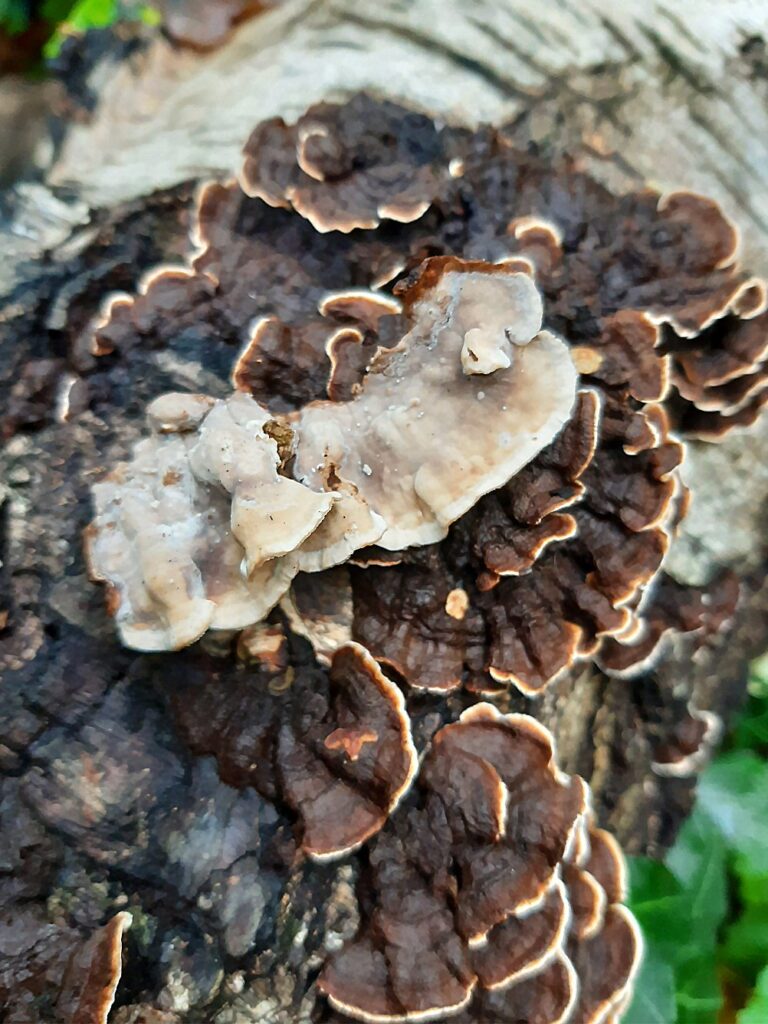
Dark trooping bracket Laxitextum bicolor, new to UK in last 5 years, first record from Gunnersbury Triangle today! Alick said it seemed to be making itself quite at home, and indeed while those of us who recognise a few of the common brackets couldn’t have placed this species, we’d never have guessed it was brand new.
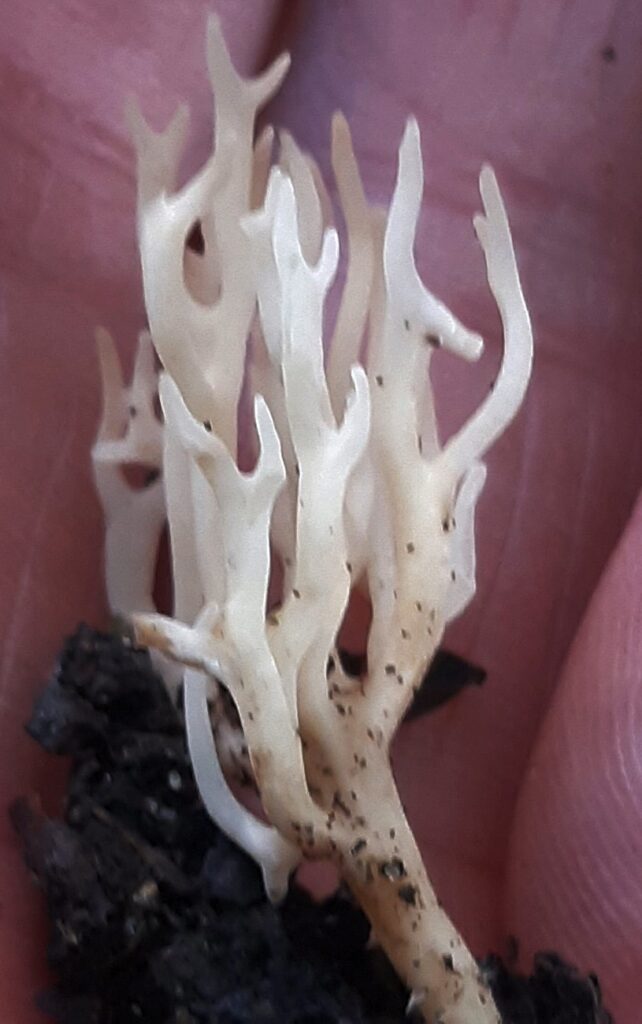
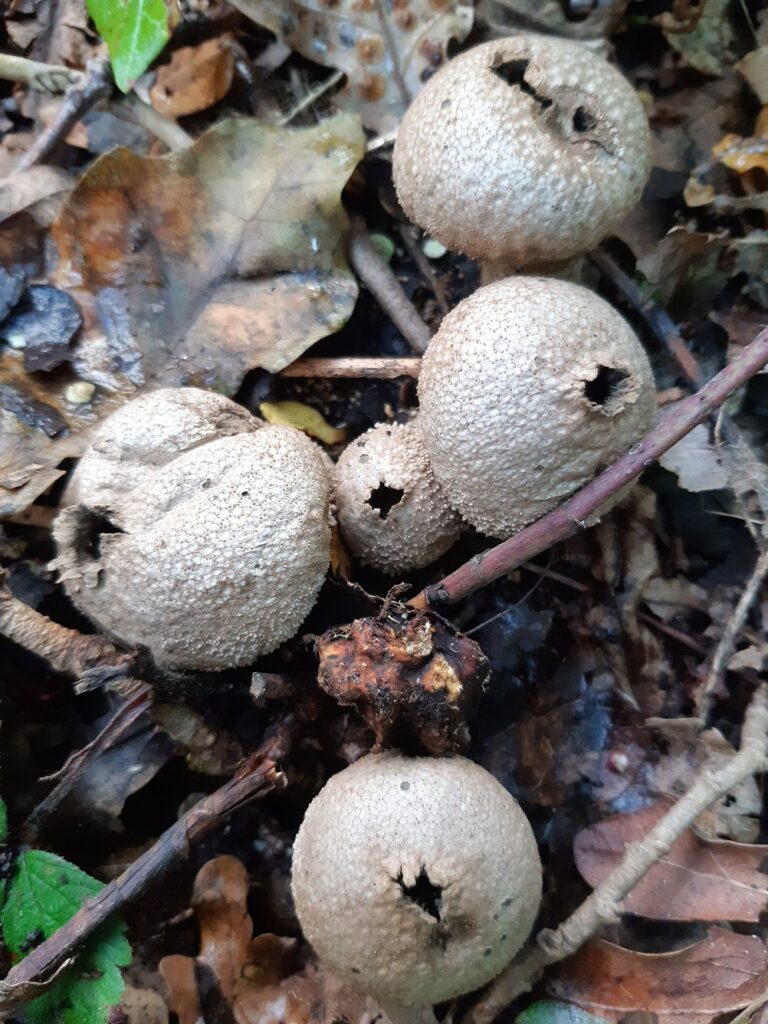
Lycoperdum perlatum, the common Puffball. Alick told us the marvellously funny etymology of the name: Lykos is Greek for wolf, perdon for fart, and perlatum is Latin for pearly, meaning the surface decoration. Perhaps the puff of brown spores when you touch an old specimen is the wolf’s fart, who knows.
Mycena spp.
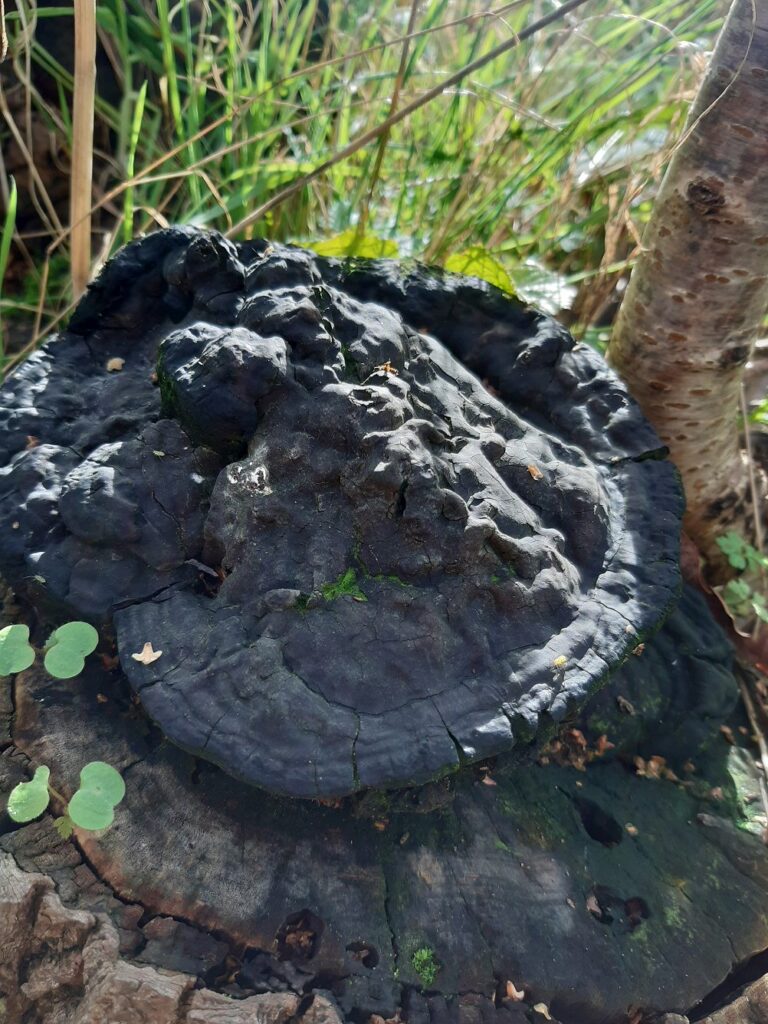
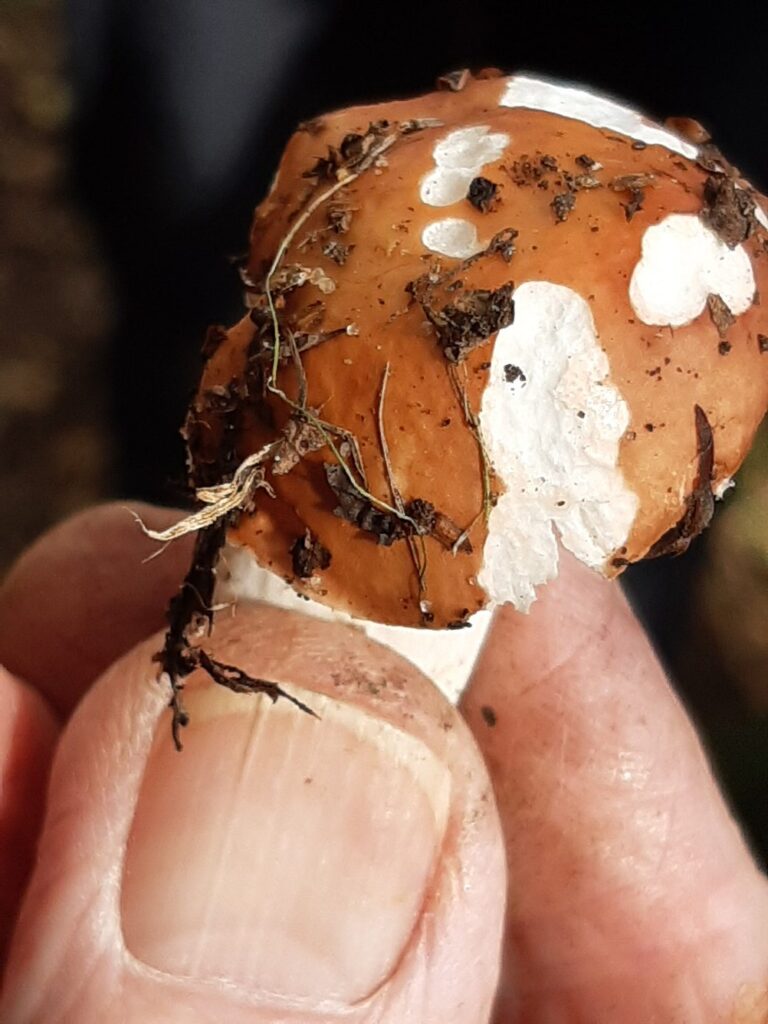
Tricholoma album
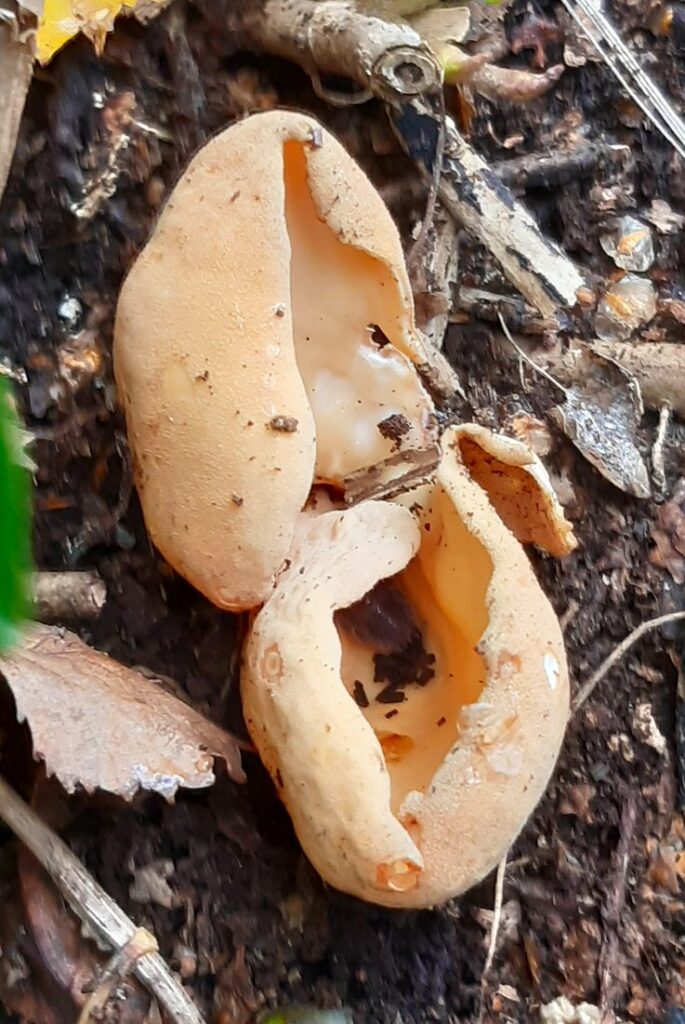
Hebeloma sp., a Poisonpie toadstool
Cortinarius sp. (Webcaps), subgenus Telamonia, a very difficult group, separated by DNA analysis. Into Alick’s box it went!
Geastrum triplex, the Collared Earthstar (photo at top), a really handsome and uncommon fungus. We seem to be getting it every year here now, a delight. Alick has found 3 species of Earthstar here in Gunnersbury Triangle.
Melanoleuca sp., a cavalier mushroom
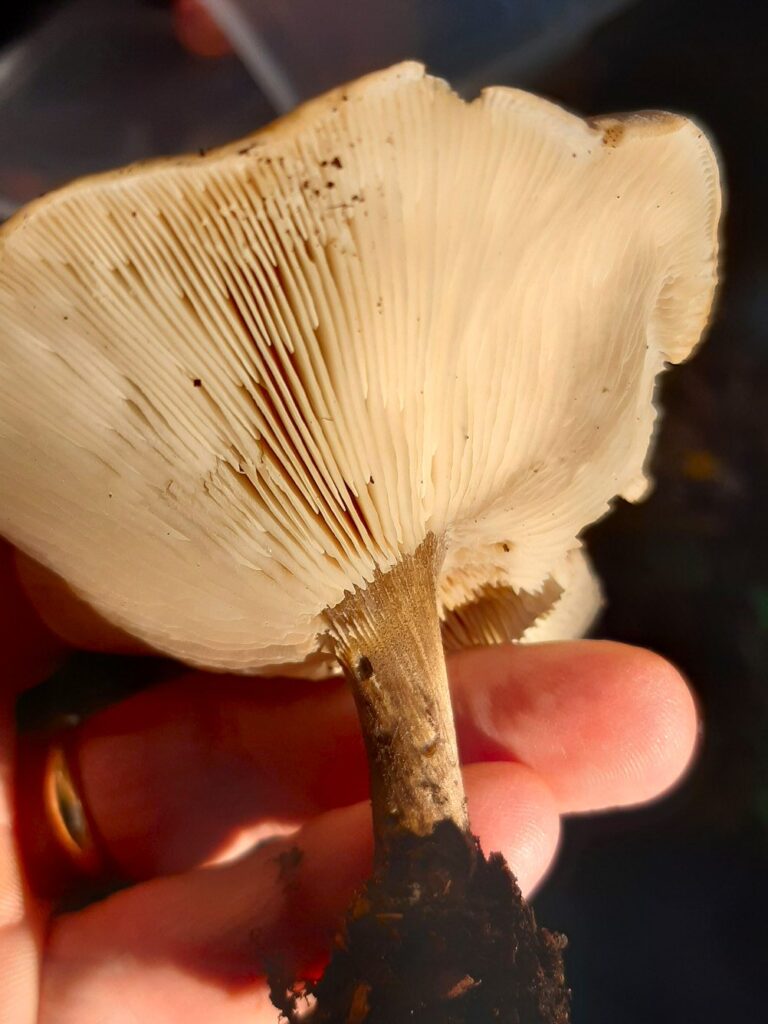
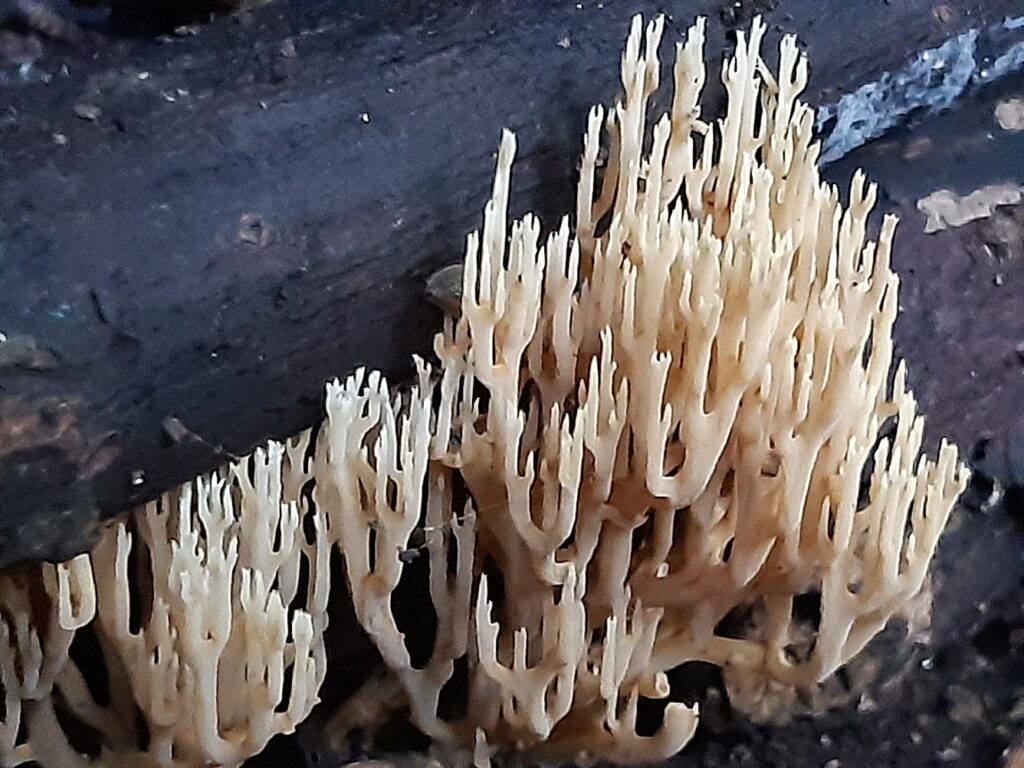
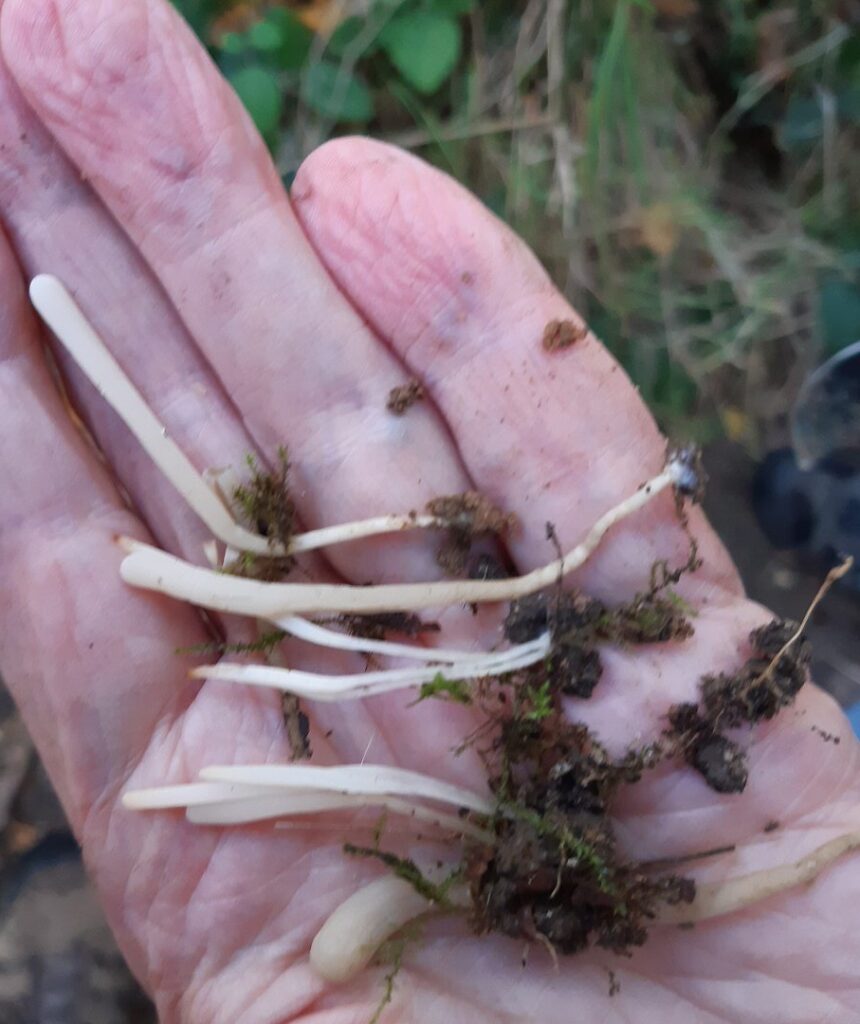
Armillaria mellea, the Honey Fungus, a dangerous parasite of trees, and it continues to flourish as a saprophyte after they are dead, rotting their wood. Its English name is for its warm honey colour. It can be eaten but who’d want to.
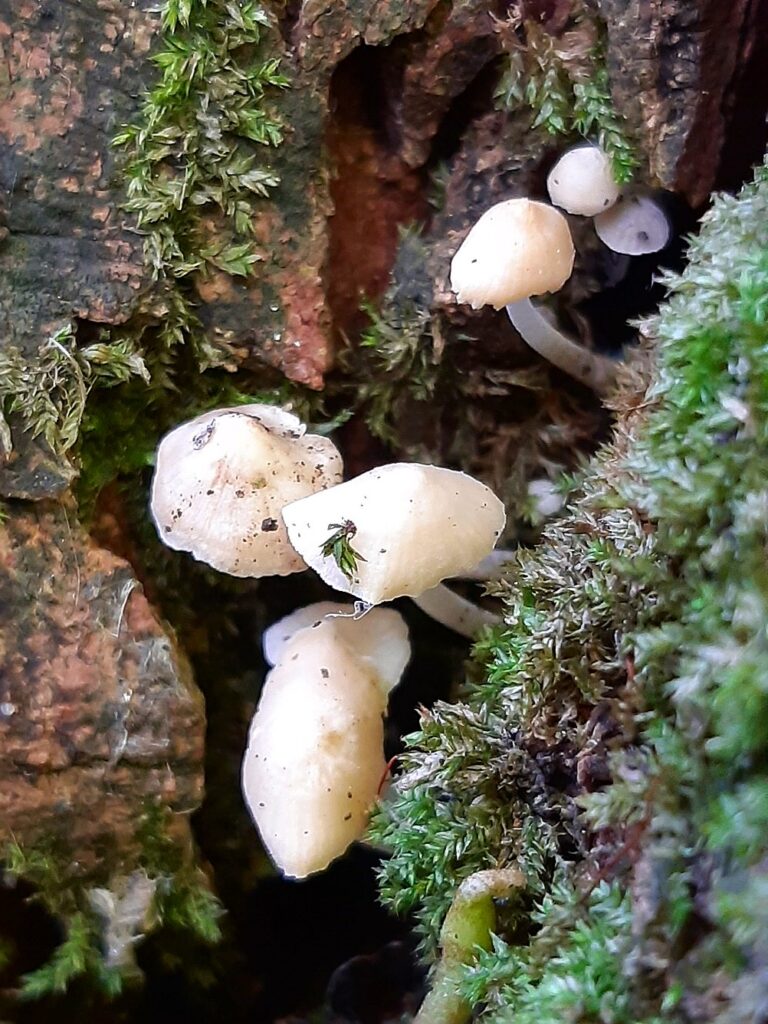
Mycena archangeliana
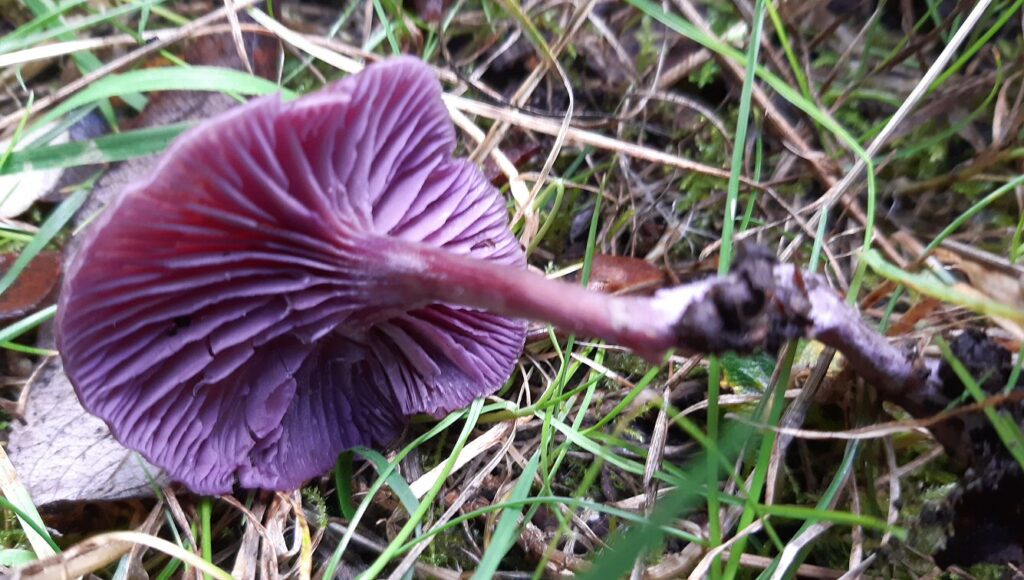
We saw no fewer than 3 species of Deceiver, including Laccaria laccata, the (common) Deceiver, as well as the two illustrated here. The group is well named; beginners collect handfuls of interesting-looking mushrooms of all different shapes, sizes, and appearances, and are crestfallen to discover they’re all the same species!
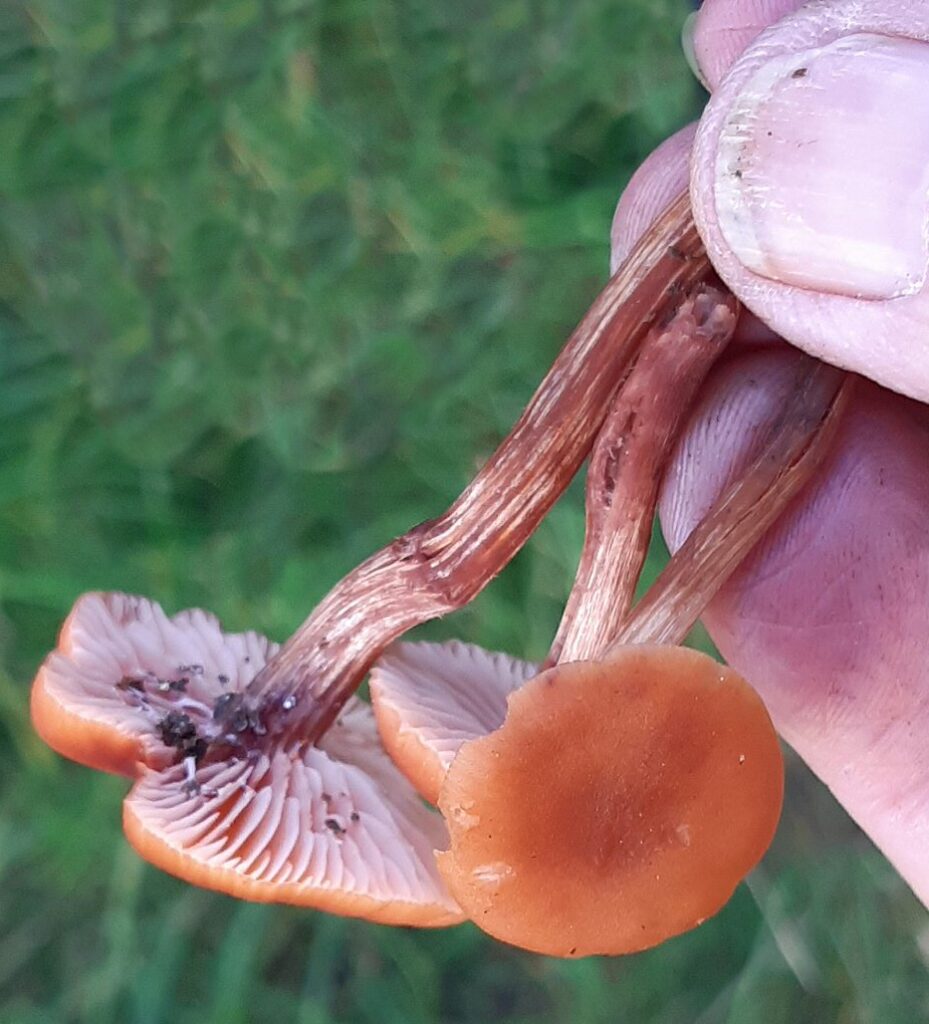
Inocybe geophylla, the white Fibrecap
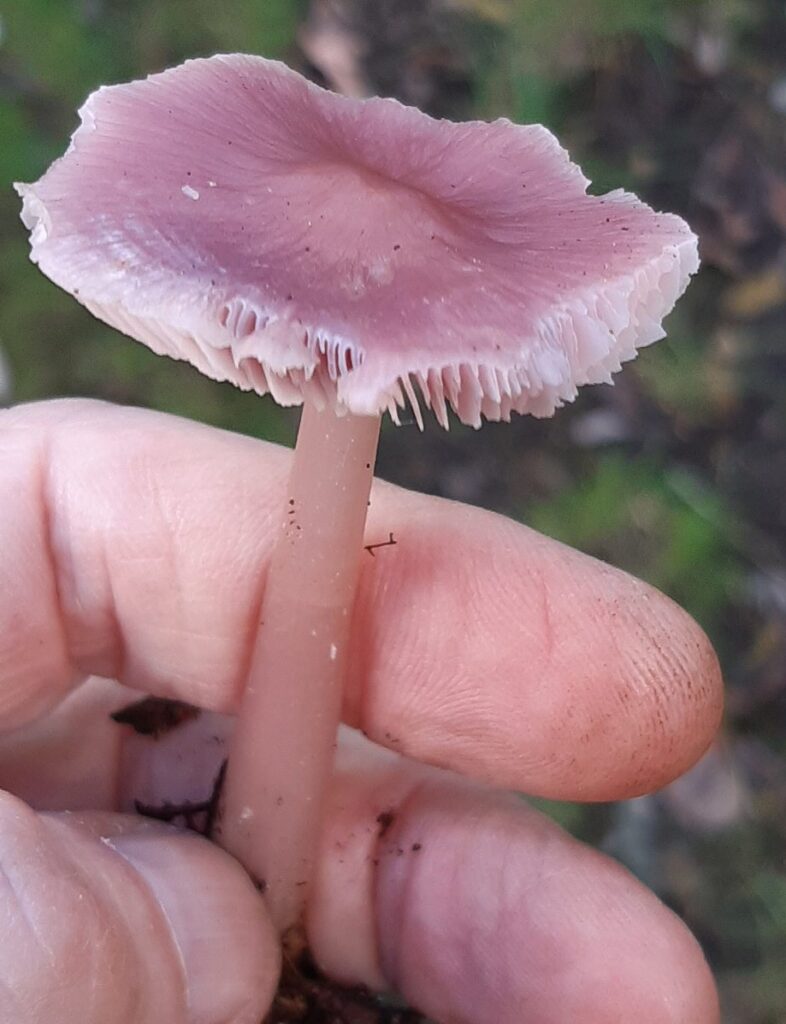
Mycena pura, the very common and variable Lilac Bonnet, another relatively large and attractive bonnet mushroom. The Collins guide says that some think M. rosea is just a form of this species.